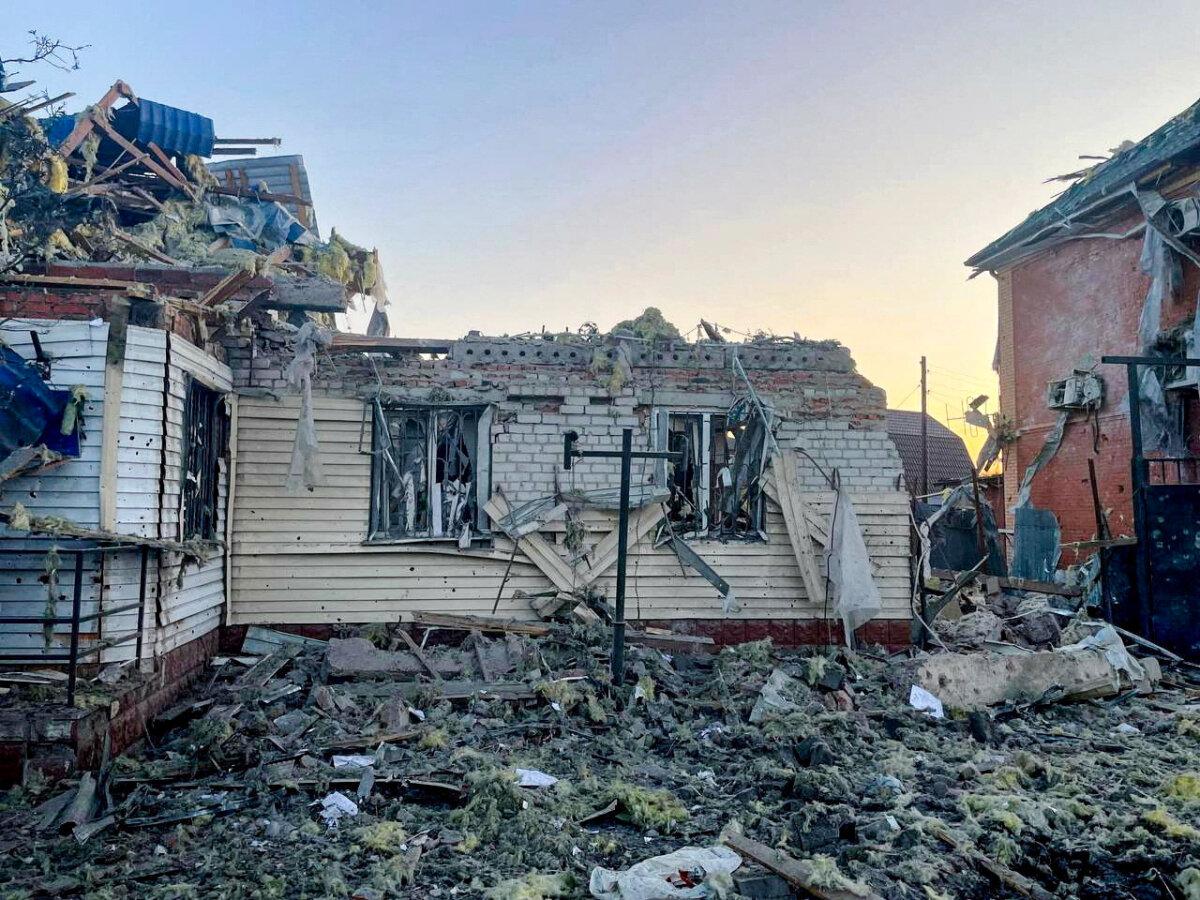Belgorod in Russia Declares Federal Emergency Amid Ongoing Battles in Nearby Kursk
Almost 10 days into Kyiv’s cross-border offensive, Ukraine says its forces are still making headway as Moscow says Kursk is under ‘Russian troops’ control.’
Russian authorities have declared a federal state of emergency in the western Belgorod region amid an ongoing Ukrainian cross-border offensive in the neighboring region of Kursk.
Kurenkov described the situation in Kursk, which sits northwest of Belgorod, as “complicated and tense.”
According to the minister, ongoing Ukrainian attacks in Kursk have led to steadily mounting civilian casualties in the region and widespread material damage.
“Work has been organized … to provide comprehensive assistance to the affected population,” Kurenkov said.
“However, the scale of what is happening makes it impossible for the regional authorities to address the … emergency on their own,” he added.
Since Kyiv first launched its offensive, Russian authorities have evacuated tens of thousands of civilians from Kursk’s border areas and the neighboring regions of Bryansk and Belgorod.
On Aug. 6, thousands of Ukrainian troops—backed by tanks and artillery—poured into Kursk, which shares a roughly 150-mile-long border with Ukraine.
Moscow has rushed reinforcements to the region, while Russian aircraft and artillery have continued to pound Ukrainian troop concentrations in Kursk’s border areas.
Despite fierce Russian counterattacks, Ukrainian forces have made significant gains, which Russian official sources have partly confirmed.
Russia’s defense ministry has acknowledged the presence of Ukrainian forces in areas of Kursk up to 17 miles from the border.
According to Kyiv, Ukrainian forces have established control over almost 450 square miles of Russian territory, including dozens of border settlements.
Earlier this week, Kursk’s acting governor told Russian President Vladimir Putin that as many as 28 border settlements were in an area currently under Ukrainian control.
“The enemy is pushing,” Apty Alaudinov, a top Russian defense ministry official, recently said in televised remarks. “He is trying to get through from everywhere.
“But every day,” he added, “the enemy’s forces are melting.”
According to the defense ministry, Ukraine has lost more than 2,300 troops—and dozens of tanks and armored vehicles—since the cross-border offensive began.
The Epoch Times could not independently verify battlefield claims made by either side.

Conflicting Narratives
On the evening of Aug. 14, Alaudinov declared that the situation in Kursk was currently under “Russian troops’ control,” according to TASS.
“The blocking of those Ukrainian formations that have entered the territory is now being completed,” he said.
Alaudinov also claimed that Ukrainian forces in Kursk were “no longer taking offensive actions” and were now digging in “to avoid being annihilated.”
Russian forces, he added, were preparing to launch a “widespread offensive to completely destroy the Ukrainian armed forces in the area.”
His assessment, however, jars with reports emanating from Kyiv, where Ukrainian officials continue to report battlefield gains.
“We continue to advance further in Kursk, from 1 to 2 kilometers [between 0.6 and 1.2 miles] in various areas since the start of the day,” Ukrainian President Volodymyr Zelenskyy wrote in an Aug. 14 social-media post.
In 2022, Russia invaded—and effectively annexed—large swaths of eastern and southeastern Ukraine, where most of the fighting has since been concentrated.
Nevertheless, Russia’s western Kursk, Belgorod, and Bryansk regions, all of which share borders with Ukraine, have not been immune from the conflict.
Last year, Russian forces beat back several large-scale cross-border incursions into Kursk and Belgorod by what Moscow called “Ukrainian saboteurs.”
Since then, Russia has used its western regions to conduct increasingly frequent cross-border strikes on Ukraine’s northeastern Kharkiv and Sumy regions.
In June, the Pentagon granted Kyiv permission to use U.S.-supplied weapons in response to limited cross-border attacks from inside Russia.
Kyiv, however, remains prohibited from using U.S.-supplied long-range munitions to strike targets deep inside Russian territory.
“We, of course, are supportive of efforts to disrupt [Russian] operations that might be immediately across the border,” a State Department spokesman told reporters on Aug. 13.
“Beyond that, there has been no change in [U.S.] policy,” the spokesman said.
He went on to reiterate that the United States was “not engaged in any aspect or planning or preparation for this [Ukrainian cross-border] operation.”

Fog of War: Sudzha
Since Kyiv first launched its surprise offensive, the fog of war has enveloped Kursk’s town of Sudzha, a key transit hub for Russian natural gas.
In the opening days of the offensive, Russia’s defense ministry claimed that its forces had halted a Ukrainian bid to capture Sudzha, which sits roughly 6 miles from the border.
But on the evening of Aug. 14, Ukraine’s top military commander, Oleksandr Syrskyi, declared that Ukrainian forces were now in control of the town.
“The primary goal in the Kursk region is to prevent further Russian attacks originating from this area,” the ministry added.
Hours earlier, Ukrainian state television broadcast footage purportedly showing Ukrainian troops removing a Russian flag from a government building in Sudhza.
Russian officials, for their part, have been quick to challenge the claims.
“The Ukrainian armed forces do not control Sudzha, despite some reports,” Alaudinov said, according to TASS.
“Russian Defense Ministry units are in the city,” he added, conceding that “intense clashes” remained underway in the area.
Reuters contributed to this report.





